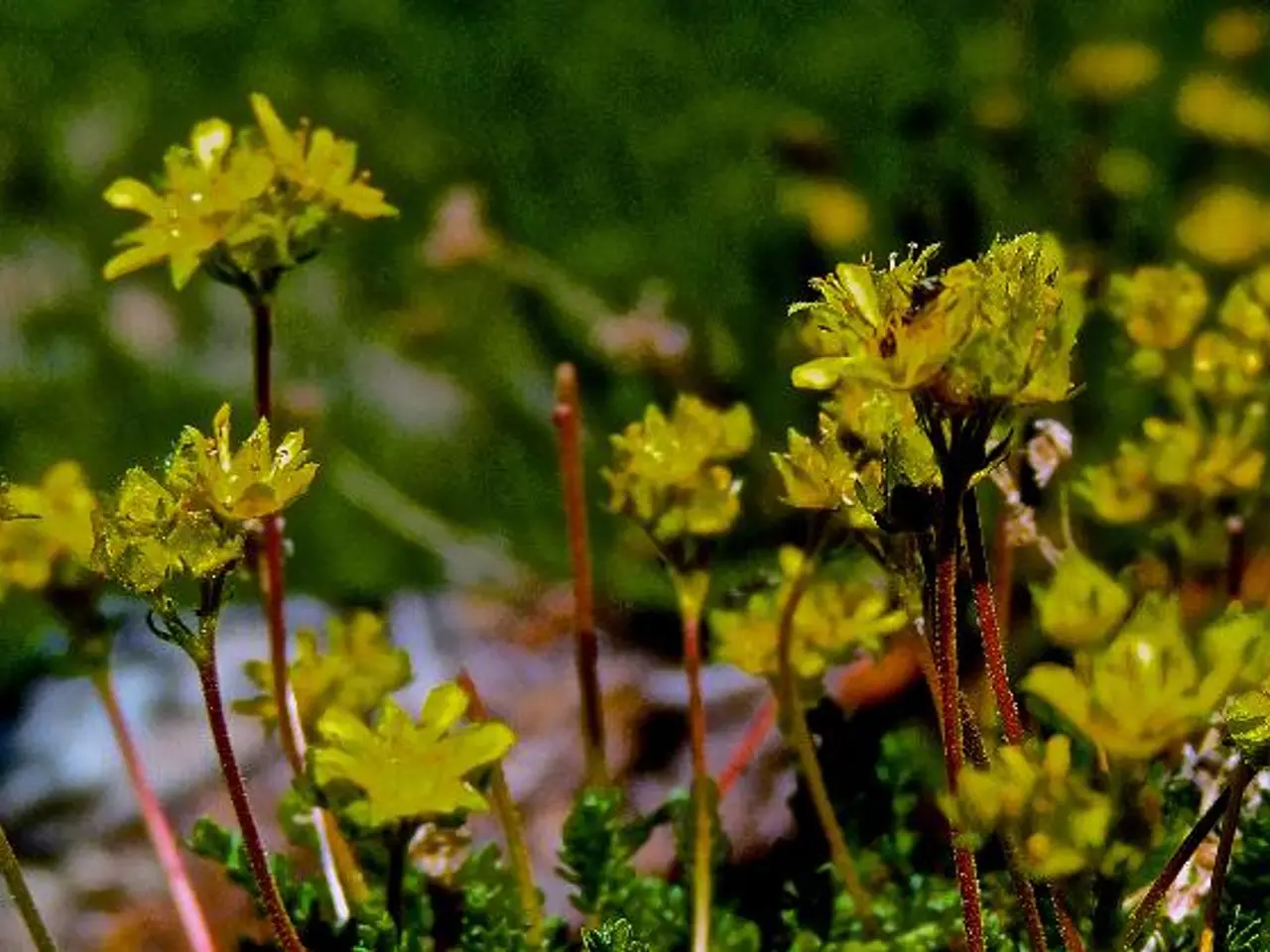Yellowing Crape Myrtle Leaves: Understanding Causes and Solutions
In gardens across the country, crepe myrtles are cherished for their vibrant flowers and attractive bark. However, these beloved plants can sometimes fall ill, with yellowing leaves being a common sign of distress. This article aims to help gardeners identify and address the causes of yellow leaves on crepe myrtles.
Yellowing leaves can be caused by various factors, including nutrient deficiencies, pests, diseases, and environmental stresses. One of the most common causes is natural leaf aging, where leaves go through their life cycle before falling off, especially in autumn or winter. However, premature yellowing could signal a problem such as disease or environmental stress.
Overwatering and poor soil drainage can suffocate roots by limiting oxygen availability, leading to yellow leaves. Fungal infections such as powdery mildew occur especially with excessive shade and water overspray, causing leaf damage that may appear as yellowing before other symptoms. Pests such as spider mites and aphids can also stress the plant, potentially causing leaves to yellow.
To address yellowing leaves on crepe myrtles, it's essential to check soil moisture and reduce watering if the soil is soggy. Improving drainage by adding organic matter or using raised beds can help prevent overwatering issues. Avoiding excessive shade and water on foliage can reduce fungal problems like powdery mildew, with watering at soil level rather than overhead being recommended.
Removing and pruning off affected leaves or branches can help reduce pathogen spread and encourage new growth. Managing pests by spraying with a strong stream of water can dislodge spider mites and aphids. Ensuring balanced fertilization can help if nutrient deficiency is suspected, but avoid fertilizing during extreme heat or drought stress as uptake will be poor.
It's worth noting that some yellowing is normal seasonal leaf senescence and not a cause for concern. In fall, yellowing leaves could simply indicate a natural response to the changing season as leaves prepare to drop.
Glen, a gardening expert with over 15 years of experience in garden maintenance, design, and landscaping services, offers some insightful tips. He prefers to prune crepe myrtles in late winter or early spring. He uses a balanced, slow-release fertilizer in spring as new growth appears, containing nitrogen, phosphorus, and potassium. Crepe myrtles thrive in full sun and well-drained soil, receiving at least six hours of direct sunlight each day.
When crepe myrtles are newly planted or recently transplanted, they may experience transplant shock, which can manifest as yellowing leaves. To mitigate transplant shock, provide consistent water to the new tree, examine the tree for signs of damage or pests, and minimize stress by limiting fertilizer application until the tree shows signs of new growth and stability.
In established crepe myrtles, yellowing may indicate a deficiency that could necessitate a soil test or controlled-release fertilizer application in spring and summer. Fungicides, insecticidal soaps, horticultural oils, and strong water streams can be used to manage diseases and pests in crepe myrtles.
In conclusion, understanding the causes of yellow leaves on crepe myrtles is crucial for maintaining healthy and vibrant plants. By following the tips provided, gardeners can identify and address potential issues, ensuring their crepe myrtles continue to thrive.
To maintain a vibrant garden, it's crucial to address yellowing leaves on crepe myrtles. Poor soil drainage, overwatering, fungal infections like powdery mildew, and pests such as spider mites and aphids can all cause premature yellowing. To address this, check soil moisture, improve drainage, avoid excessive shade and water on foliage, and manage pests effectively. Glen, a gardening expert, suggests pruning in late winter or early spring, using a balanced, slow-release fertilizer in spring, and ensuring crepe myrtles receive at least six hours of direct sunlight daily. Transplant shock may also cause yellowing, so provide consistent water to newly planted or transplanted trees and limit fertilizer application until the tree shows signs of new growth.




